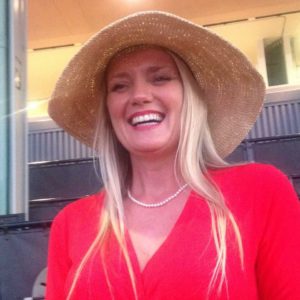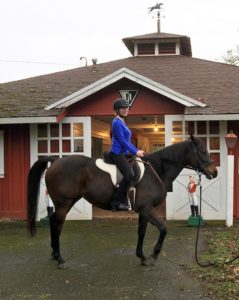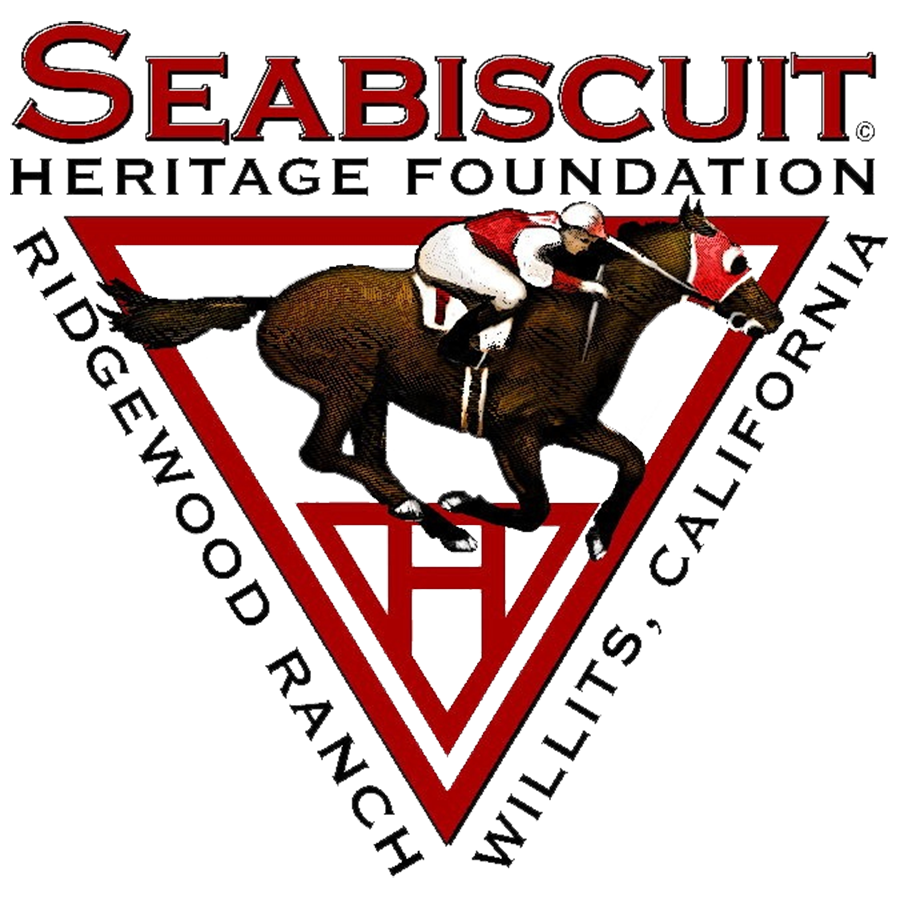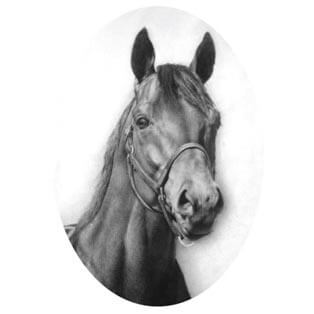Seabiscuit: DNA of a Champion
Foreword by Col. Michael C Howard, U.S.M.C (ret.)
Our Howard Family has been blessed going on several decades now knowing and working closely with Jacqueline Cooper. From Ridgewood Ranch to Israel, we have worked with her on a wide range of historical projects in which she continues to amaze me with her dedication, professionalism, artistry, energy, and indomitable spirit. She even stepped up to volunteer as President of the Seabiscuit Heritage Foundation (2014-2017). This has included her warm welcome and inclusion into the Seabiscuit story at Ridgewood of Walter & Joan Mondale, Laura Hillenbrand, and many others who share the passion for The Biscuit. From the US Postal Service official Seabiscuit Stamp ceremony to many articles and blogs, to ranch historic preservation projects, grant efforts and fundraisers, Jacqueline’s German blood comes through in her drive and determination to accomplish the mission with class and high standards. Her personality and humor are amazing at building a team to make positive things happen. In addition to her leadership and organizational skills, she is a lover of all things equine, particularly as an owner and breeder of her own line of horses tracing their bloodline to Seabiscuit. She knows this subject well, and her knowledge of the breeding industry and DNA studies makes her highly qualified in explaining this groundbreaking work and story. We are all blessed to have her brain and heart fully engaged in this ongoing work of studying and telling the Seabiscuit story in ever new and revealing ways. Jacqueline is an American patriot and we now consider her a full-fledged member of our Seabiscuit-Howard Family.”
Col Michael C. Howard US Marines (Ret)
Seabiscuit: DNA of a Champion
by Jacqueline Cooper

Why did I become involved in a Seabiscuit DNA project? It is quite simple really. Browsing in a local bookstore in 2002, a particular volume by Laura Hillenbrand on the best-seller list caught my eye. The cover, bearing a racehorse with nostrils flaring and a certain look in his eye, draped in the victors flowers, along with a jockey wearing the most gratified smile and the owner who could not be any more proud, caught my eye. The black and white photo gave it away, these events unfolded a long time ago. I was captivated along with the rest of America by Seabiscuit, An American Legend, the story that also inspired an Oscar nominated movie.
Because of my fondness of horses instilled by my grandfather and Great Uncle, a horse breeder, and memories of assisting in training young Thoroughbreds stemming from my youth in Germany, (mucked out stalls for the privilege), I felt compelled to find out more. Overcome with a sense of awe, I realized history had played out just a few miles from where we lived in Willits, CA.
A trip to the Mendocino County Museum where Seabiscuit artifacts where on display was followed by a tour of Seabiscuit’s stud barn at Ridgewood Ranch, where the horse stood at stud from 1939-1947. The first class Thoroughbred breeding operation was originally built by Charles Howard for the retiring hero, Seabiscuit, after he flew into history at the 1940 Santa Anita Handicap, setting a track record and earning the title of world’s leading money winner after overcoming what was thought to be a career ending injury at age 7. There, at his home, I was met by the most welcoming and friendly people, the current ranch owners, the members of Christ’s Church of the Golden Rule. Quite overcome with emotion, I had a clear and distinct impression to set off on a new mission, to research, locate and perpetuate the bloodline of Seabiscuit.
Based on Jockey Club progeny reports Seabiscuit sired 108 foals and based on my research showed by the 1960’s, they had almost completely vanished with the exception of a few of Seabiscuit’s descendants remaining in the US today. There might have been a few contributing factors, WWII for one, a time of gas rationing when Thoroughbred breeders simply didn’t have the wherewithal to haul their broodmares to northern California. Therefore, Charles Howard mainly bred Seabiscuit to his own mares accounting for the low number.
War Admiral in Kentucky by comparison enjoyed much better access to better quality mares. Also, the sport of racing all but came to a halt, when Santa Anita Park turned into the internment camp for the Japanese. It was not until Seabiscuit’s grandsons and granddaughters were born, and WWII was over, that they could prove themselves on the track in the US. A few good runners descended from Seabiscuit, including Sea Swallow and Sea Orbit, who was thought to be Seabiscuit’s best grandson.

An ad in a local paper in search of Seabiscuit cognate relatives, was answered and our first broodmare, was purchased in 2003. With that we began our modest, Lil’Biscuit breeding program, adding two Thoroughbred mares that bear Seabiscuit blood through Seabiscuit’s brilliantly fast stakes winning grandson, Windy Sea. The horses we bred and privately own became a part of historic ranch tours, including Bronze Sea (by High Brite) our first homebred. The descendant of Seabiscuit bears a striking resemblance and shares her May 23rd birthday with her famous ancestor.
Tasked with continuing the rare bloodline, we set out on a stallion tour in California to find a suitable stallion for Bronze Sea. We were quite pleased with our selection, Lucky Pulpit, sire of champion racehorse, California Chrome, who stood at the famed Harris Ranch at the time. Sadly, the horse passed away unexpectedly and we found ourselves in the surprising position of having to search for a suitable mate for Bronze Sea on short notice.
A silver-lining, the tragedy precipitated in-depth research, utilizing all available tools such as consulting with female family expert, Ellen Parker for a pedigree analysis, Allan Porter inventor of the TrueNicks system, and even author Laura Hillenbrand joined in the search and made a recommendation. What’s more, we were determined to make the best informed decision by use of genetic testing by the Instutite for Equine Genomics at the University of Binghamton, NY. Director Steven Tammariello, PhD who supplied indelible information about Bronze Sea’s genetic makeup using the racing and broodmare panel. The idea was to select a stallion genetically compatible in order to reinforce the best of Seabiscuit’s genetic makeup and to reestablish a racing presence.
The fates converged when Indian Evening (Indian Charlie – Unenchantedevening, by Unbridled’s Song) formerly raced by Vinery and standing at stud at Victory Rose Thoroughbreds, ticked all the boxes. Independently of each other, he was recommended by a female family pedigree expert, rated A++ on the TrueNicks system (based on the sons of Indian Charlie and Best Turn and his sons and grandsons), and was identified as a genetic match by Dr. Tammariello for Bronze Sea on the breeding cloud, based on his population study of over 3,000 horses. Not to mention the horse had the most stunning good looks and was kindly tempered. I am sure this had to be more than pure coincidence based on our demographics.
As fate would have it, this horse, too, passed away unexpectedly before we had a chance to breed Bronze Sea. Therefore, I was not able to put my theory to the test, when it came to utilizing genetic matching, as a tool for breeding selection.
We selected Einstein (by Spend A Buck) of the Buckpasser sire line instead, Buckpasser being one of the most successful grandsons of War Admiral, of course. Like Seabiscuit, the multi-million dollar winner, Einstein, was not terribly precocious, winning the Santa Anita Handicap at age 7. “How fitting Bronze Sea is in foal to a stallion that won Seabiscuit’s greatest feat.” said Laura Hillenbrand in a congratulatory note. In May of 2018 Bronze Sea produced a beautiful filly by Einstein, River of Life, bearing a large white star and exhibiting Einstein’s kindly temperament. We are very pleased and look forward to Rivers growth and development, allowing the foal ample time to mature.
As an owner, I am conscious of decisions that Thoroughbred breeders have made before me, when glancing at a pedigree. I am also conscious how the decisions I make may impact other generations down the line. Genetic matching can help bring about the best possible match, thereby increasing the chances of producing quality offspring vs. breeding a large quantity to produce a winner, since many of the Thoroughbreds bred today, whether well bred or not, end up at slaughter.
Our aim is to breed Thoroughbreds of the Seabiscuit line to keep and to race. Our Lil’ Biscuits, as we affectionately call them, will be allowed to spend their retirement years at Ridgewood. As a small, private horse breeder, I am conscious of the fact that I am capable of absorbing any mistakes that I may make in terms of stallion selections. Unlike other breeders, I do not have to bring the horses that we produce to market, since my livelihood does not depend on it
From a business standpoint, however, it make sense to utilize all available tools in order to make the best informed decisions in terms of breeding and training. Genetic testing can help provide valuable information in terms of racing distance, speed and precocity and could, therefore, help set up a racehorse for success both on the track and in the breeding shed.
Horses today are bred to mature early and often too much is asked of them too soon, leading to possible injury, failure and ultimately an ominous end at auction. Genetic testing can provide valuable information for better management, such as allowing horses more time to mature before putting them through the paces, as well as optimal racing distance. I look forward to the day when this type of biotechnology is widely available and widely accepted among owners and horse breeders.
A discussion with Dr. Tammariello at the University of Binghamtom, NY as to what genetic traits Bronze Sea stemmed from Seabiscuit, led to further interest in the Seabiscuit DNA study to determine what genetic traits made the champion racehorse the unique individual that he was, as well as what traits provided his incredible racing ability. Further, a comparison to today’s Thoroughbred, as the breed has changed since the 1940’s being much lighter boned, with brilliant, but shorter racing careers might also prove very interesting. We eagerly await the results as more data becomes available.
Obtaining a sample of Seabiscuit’s DNA was made possible by the cooperation of the Seabiscuit Heritage Foundation, of which I served as President (2014-2017) and California Thoroughbred Foundation where Seabiscuit’s silvered hooves, originally loaned to CTF by Marcela Howard, are currently on display. While we may find the practice distasteful today, historically it was customary to remove the hooves of a champion racehorse as a keepsake before burial. I understand from Howard family historian, Col Mike Howard, C.S. Howard was reluctant to do so, but in the end gave in, based on the advice of his Veterinarian.
I can’t say, how thankful we are that C.S. Howard made this decision. Based on Dr. Tammariello’s cutting edge genetic research, we are now given the opportunity to not only revisit history, but also to look ahead to the future and see how the science of genetic testing may help improve the lives of today’s Thoroughbred. In the words of Col Michael Howard, Charles “Poppie” Howard and Auntie Mar would be thrilled!
Jacqueline (Rosenburg) Cooper lives together with her husband, Tim, at Ridgewood Ranch, Willits, CA. Together they have been breeding Lil’Biscuits since 2003.

